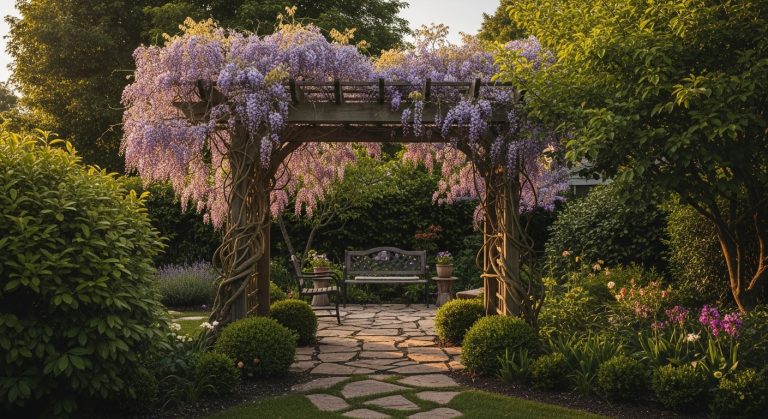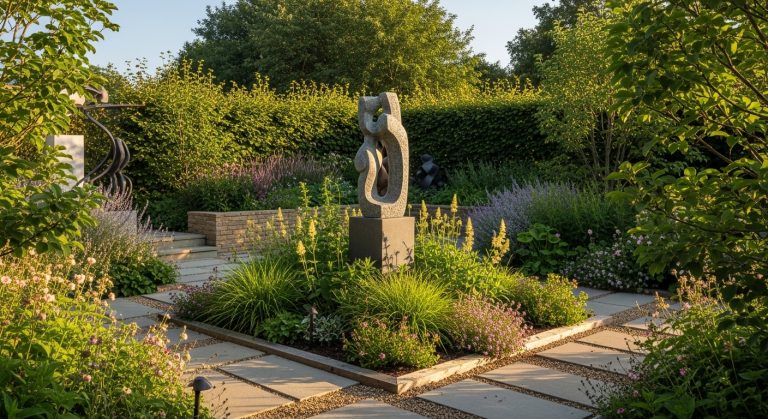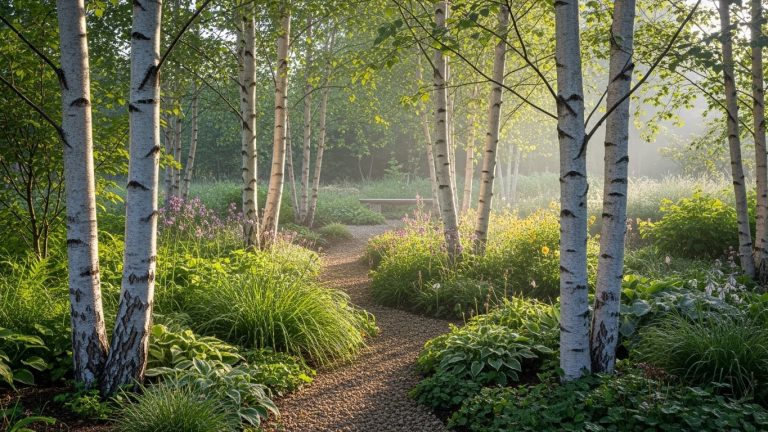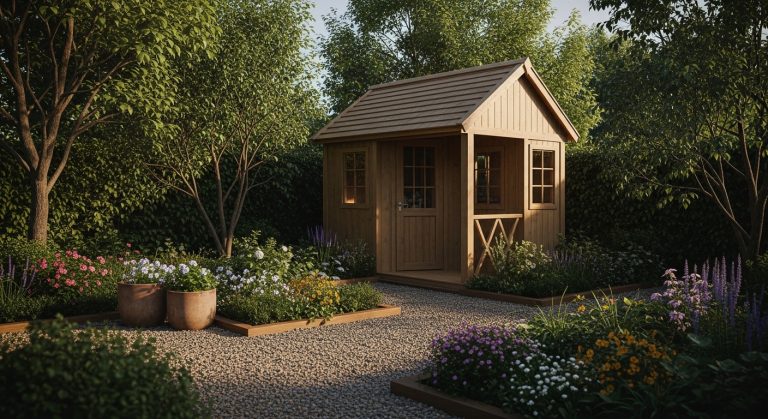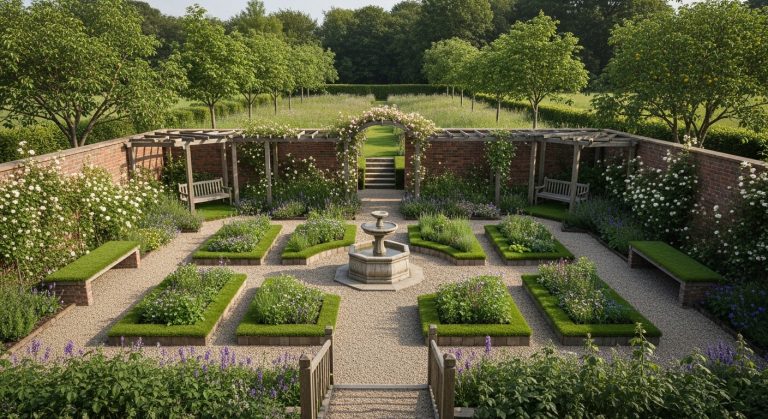Indoor Herb Garden Ideas: 15 Creative Ways to Grow Fresh Flavor at Home
So, you’ve been thinking about growing herbs indoors? Great idea. Nothing beats the feeling of snipping fresh basil or mint straight from your kitchen windowsill. An indoor herb garden is not only practical (goodbye overpriced grocery-store herbs) but also makes your home look like something out of a cozy lifestyle magazine. And honestly—who doesn’t want that little green boost of freshness while cooking?
Over the years, I’ve experimented with everything from sad mason jar basil projects (don’t ask how many I’ve killed ) to full-blown hydroponic setups that made me feel like a mad scientist. The good news is: no matter your skill level, space, or budget, there are tons of indoor herb garden ideas that can make your home greener, fresher, and tastier.
Below, I’ve rounded up 15 detailed ideas. Each one comes with its own flavor (pun intended), pros and cons, and some personal notes. Grab your coffee (or wine—I won’t judge), and let’s explore.
1. Windowsill Herb Garden
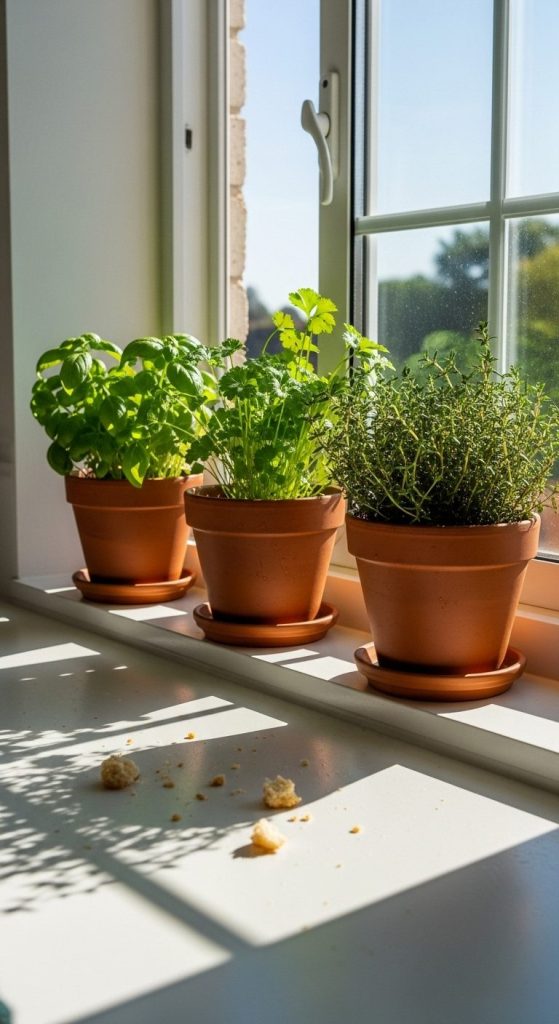
If you’ve got a sunny window, you’ve already got the perfect home for a tiny indoor herb garden. All you need are a few small pots, soil, and your favorite herbs.
Pros:
- Super low-cost setup.
- Easy to maintain.
- Fits even in apartments.
Cons:
- Only works if you have good sunlight.
- Pots can clutter the sill if you overdo it.
I started my very first basil plant this way. It felt so rewarding to make pasta sauce with herbs I literally grew a foot away from the stove. Ever wondered why food tastes so much better when you add herbs you nurtured yourself? That’s the magic here.
2. Mason Jar Planters
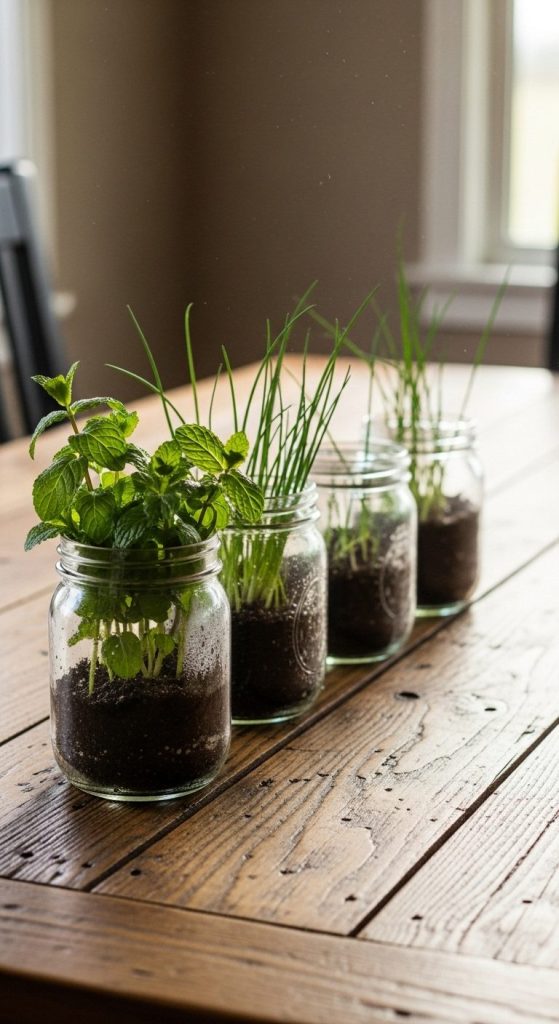
Want to turn old jars into Instagram-worthy planters? Mason jars make chic, rustic-looking herb homes.
Pros:
- Great upcycling project.
- Transparent jars let you see soil moisture levels.
- Aesthetic goals = achieved.
Cons:
- Poor drainage if you don’t add pebbles at the bottom.
- Herbs may outgrow jars quickly.
Pro tip: Use chalkboard paint to label the jars—it’s cute and actually useful. I once mixed up parsley and cilantro (rookie mistake), so labels saved my sanity.
3. Vertical Wall Garden
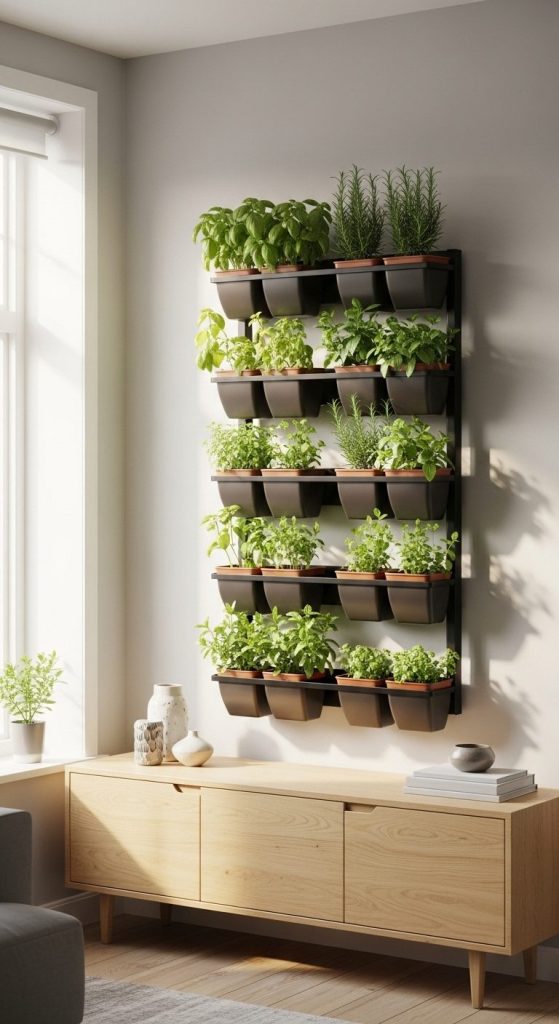
Short on counter space? Go vertical. You can hang planters or install wall-mounted racks to create a green wall of herbs.
Pros:
- Saves space.
- Looks like modern art.
- Can grow multiple herbs at once.
Cons:
- Can be tricky to water evenly.
- Needs a sunny wall or grow lights.
Did you know Statista reported that vertical gardens are becoming one of the fastest-growing indoor gardening trends? People love the mix of function and design. IMO, this is one of the best indoor herb garden ideas if you want both beauty and practicality.
4. Hanging Herb Baskets
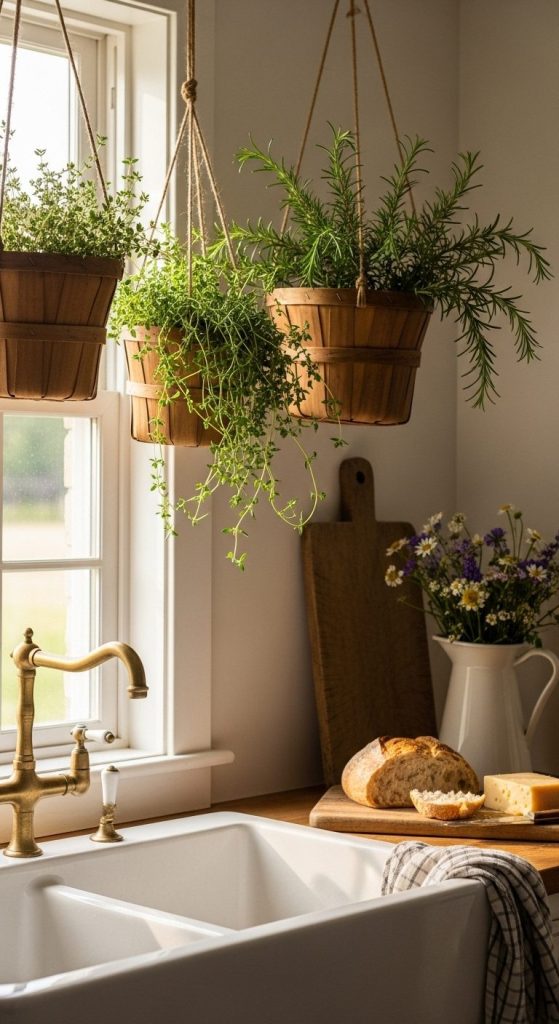
Hanging planters aren’t just for flowers—herbs thrive in them too. Plus, they make your kitchen look like a greenhouse café.
Pros:
- Frees up counter space.
- Herbs get plenty of airflow.
- Gorgeous boho vibe.
Cons:
- Watering can get messy.
- May require ceiling hooks (landlords, beware).
I once grew thyme in a hanging basket right above my sink—watering became a breeze because, well, any drips just went straight into the sink. Win-win!
5. Hydroponic Herb Garden Kit
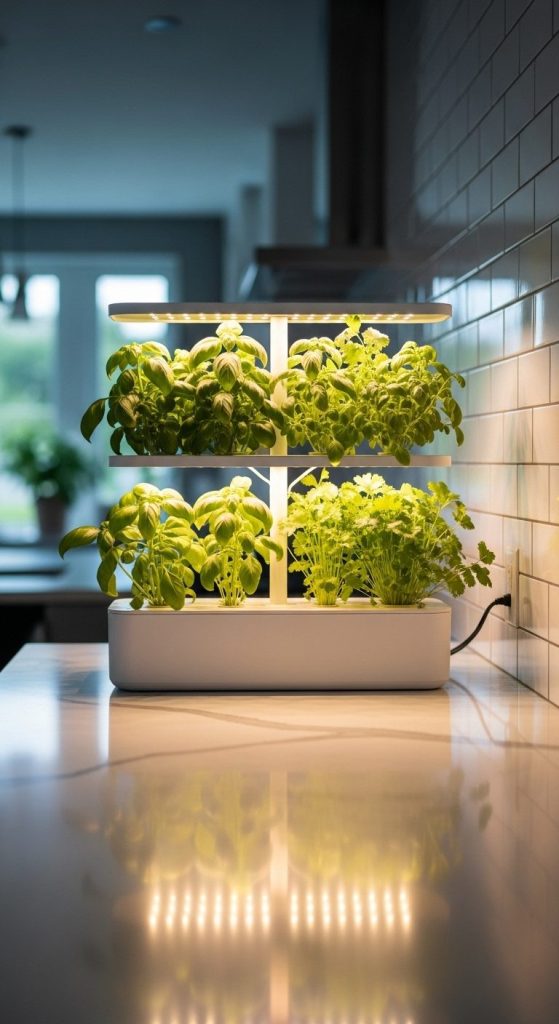
Feeling futuristic? Hydroponic systems grow herbs without soil, using nutrient-rich water.
Pros:
- Super fast growth.
- Minimal mess—no soil!
- Great for tech lovers.
Cons:
- Expensive upfront.
- Needs electricity for lights/pumps.
Market research shows hydroponic kits are booming—worth over $2 billion globally. Honestly, my hydroponic basil grew twice as fast as my soil basil. Ever feel like you’re cheating at gardening? Yeah, that’s the vibe here.
6. Tiered Plant Stand

If you want something decorative and practical, a tiered plant stand is perfect. Think of it like a bookshelf, but for herbs.
Pros:
- Holds lots of herbs.
- Adds structure to the room.
- Stylish display.
Cons:
- Takes up floor space.
- Heavy when full.
When my friend used this in her tiny apartment, it instantly made her kitchen look bigger (weird but true). Herbs also seemed happier with the tiered sunlight exposure.
7. Repurposed Tea Tins
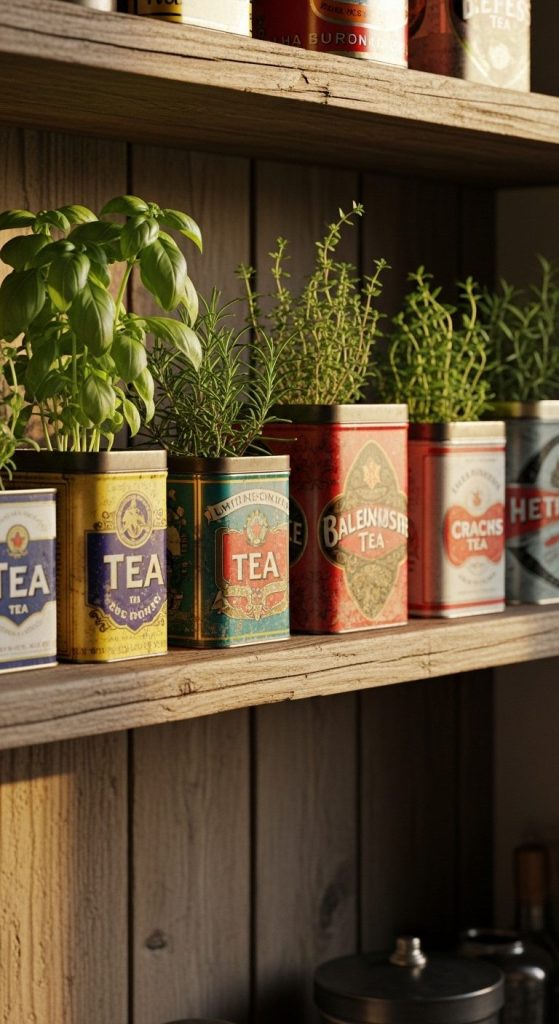
Got cute tea tins lying around? Don’t toss them—turn them into mini herb planters.
Pros:
- Budget-friendly.
- Unique vintage look.
- Great conversation starter.
Cons:
- Limited root space.
- Might need to drill drainage holes.
One time, my mint grew in an old Earl Grey tin, and my guests thought it was “Pinterest-level adorable.” If you love quirky touches, this one’s for you.
8. Windowsill Greenhouse

You can buy or DIY a tiny greenhouse that fits right on your sill. Herbs love the extra humidity.
Pros:
- Protects herbs from drafts.
- Speeds up growth.
- Keeps pests away.
Cons:
- Can fog up and block sunlight.
- Costs more than simple pots.
Did you know NASA studied greenhouse effects for growing plants in space? If astronauts can garden on Mars, you can definitely grow basil on your sill. 🙂
9. Smart Herb Garden
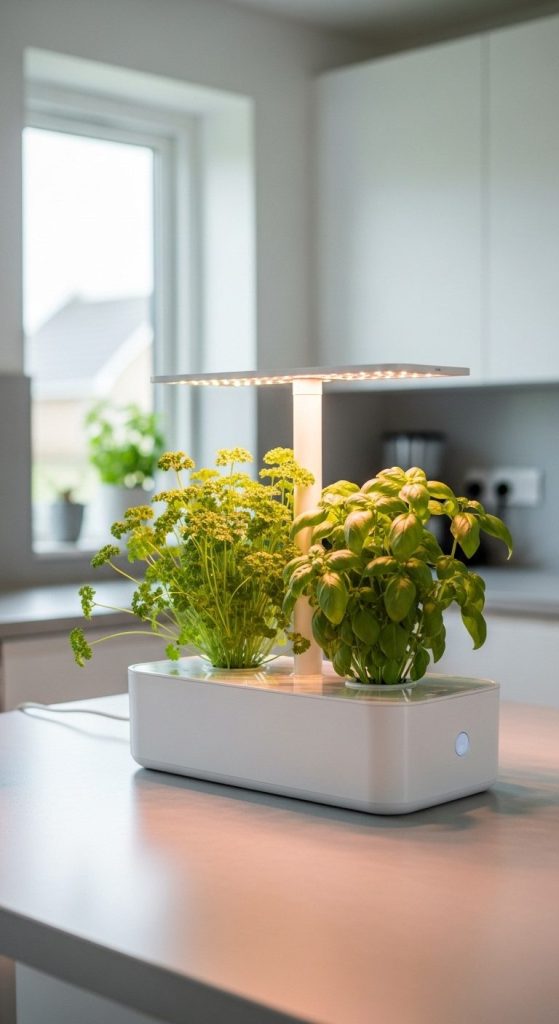
Yes, smart gardens are a thing. These Wi-Fi-enabled systems remind you when to water, adjust light, and sometimes even auto-water.
Pros:
- Almost foolproof.
- Perfect for busy people.
- Looks sleek.
Cons:
- Pricey.
- A bit too “hands-off” for DIY purists.
I tested one last year and, not gonna lie, it made me feel lazy. But hey, I always had fresh parsley on hand without lifting a finger. Ever wanted a personal gardener? This is close.
10. Herb Terrariums

Terrariums aren’t just for succulents—you can grow herbs in them too. They create a humid microclimate, which herbs like basil love.
Pros:
- Decorative centerpiece.
- Low-maintenance.
- Herbs stay lush.
Cons:
- Limited airflow.
- Not ideal for woody herbs (like rosemary).
These always make me feel like I’m keeping a tiny jungle on my desk. Bonus: it doubles as a conversation piece.
11. Shelf Herb Garden
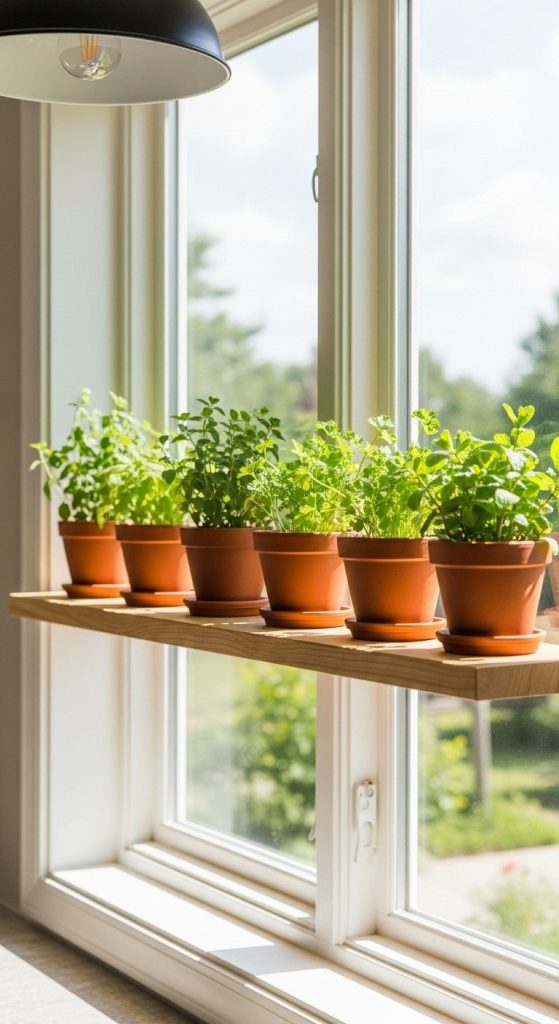
Install a floating shelf near your kitchen window and line it with herb pots. Clean, simple, effective.
Pros:
- Sleek and organized.
- Easy to water.
- Great use of vertical space.
Cons:
- Shelf weight limits.
- Needs sturdy wall mounts.
I once grew oregano and parsley on a floating shelf, and it actually made my kitchen feel like a café. Visitors kept asking, “Where did you get that setup?”
12. Grow Lights Herb Station
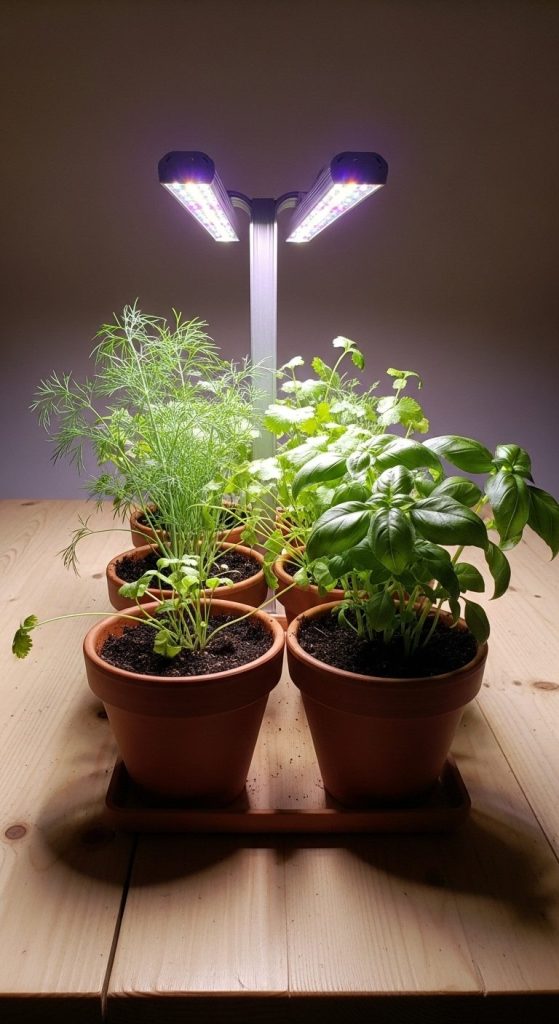
If your house doesn’t get much sun, grow lights will save you. A small shelf with LED grow lights can keep herbs thriving year-round.
Pros:
- Works even in dark rooms.
- Boosts winter growth.
- Reliable results.
Cons:
- Uses electricity.
- Lights can look “fake sunny.”
Statista reports indoor gardening with grow lights jumped 40% in sales last year. Clearly, we’re all chasing sunlight indoors. Ever wished you could bring summer inside? This is how.
13. Ladder-Style Herb Garden

Repurpose an old ladder into a vertical herb garden—quirky, rustic, and practical.
Pros:
- Tons of growing space.
- Fun DIY project.
- Adds farmhouse vibes.
Cons:
- Takes up floor area.
- Not ideal for small apartments.
When I first saw this at a friend’s place, I thought, “Okay, that’s genius.” She grew sage, thyme, and even cherry tomatoes on it.
14. Magnetic Herb Pots on Fridge
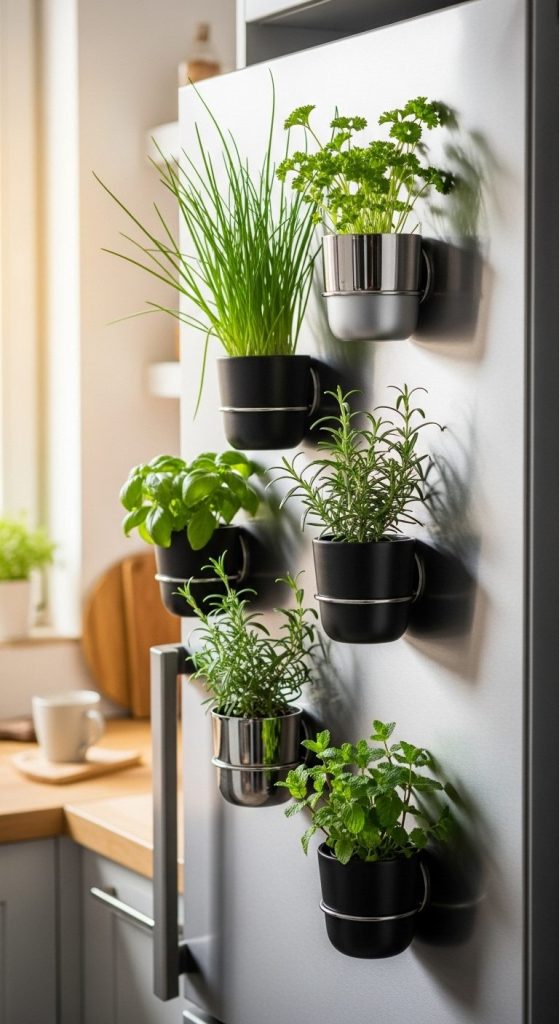
Turn your fridge into an herb-growing station with magnetic planters. Perfect if counter space is nonexistent.
Pros:
- Space-saving.
- Fun and quirky.
- Herbs right at eye level.
Cons:
- Only works with small herbs.
- May need strong magnets.
I grew chives this way, and every time I opened my fridge, I felt like I was in a sci-fi cooking show.
15. Herb Cart on Wheels
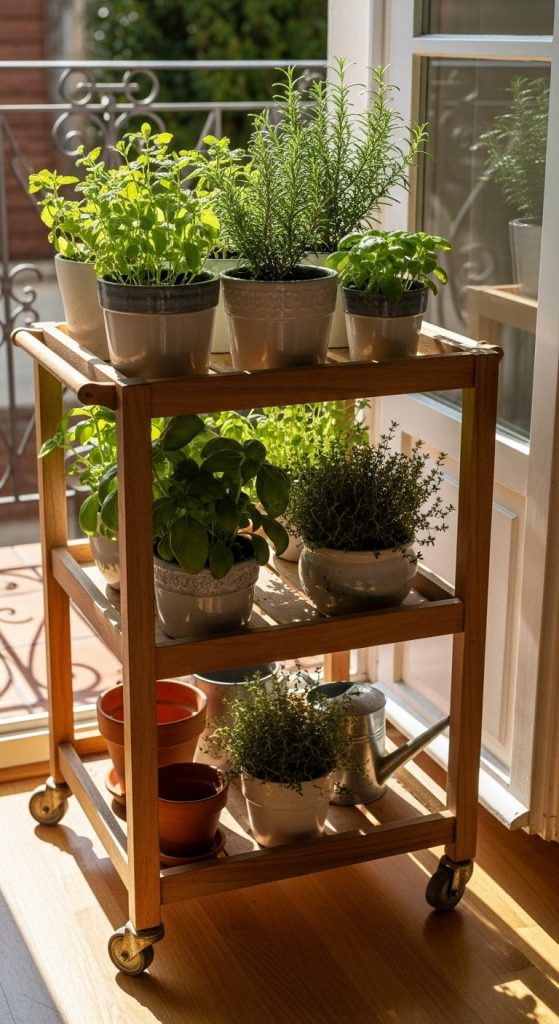
Get a rolling cart, line it with herb pots, and voilà—a mobile indoor herb garden.
Pros:
- Move it to follow sunlight.
- Portable and flexible.
- Holds many herbs.
Cons:
- Takes up floor space.
- Can be heavy when watered.
Honestly, this is my favorite hack. I roll my cart outside on sunny days and back inside at night. It feels like my herbs are on vacation.
Conclusion
There you have it—15 creative indoor herb garden ideas that work for every space, budget, and vibe. From high-tech hydroponics to quirky tea tin planters, there’s truly something for everyone. And here’s the kicker: even if you don’t have a green thumb, herbs are forgiving, rewarding, and honestly, fun to grow.
So go ahead—pick one of these ideas, grab some soil (or not, if you’re going hydro), and start your own little green sanctuary. Trust me, your future self (and your future recipes) will thank you.

William Martin is a passionate bowler who spends most of his weekends playing the sport. With years of intense experience under his belt, William decided to share his knowledge by creating BOWLING OCEAN. Join me on this journey to explore the world of bowling and discover the tips and tricks to becoming a pro.

